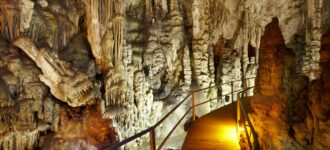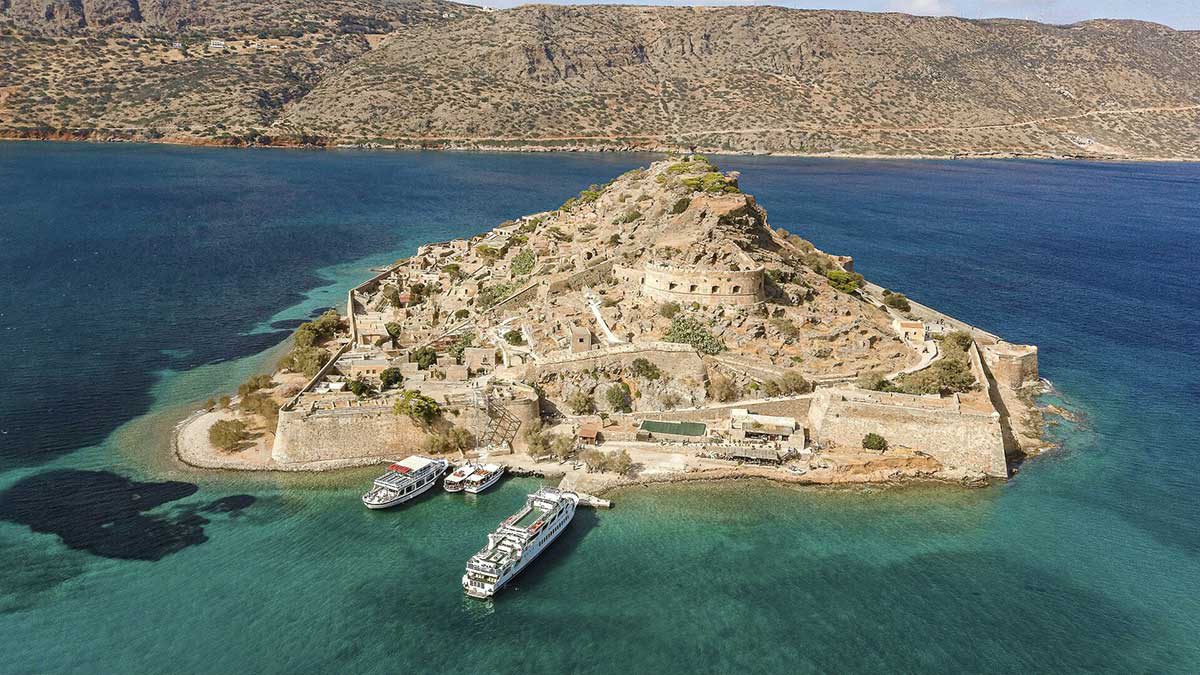
Abandoned by its last inhabitant in 1962, Spinalonga is a monument of outstanding universal value, according to UNESCO. The World Heritage Convention describes the islet as “an important example of a seaward bastion-type fortress that portrays important phases of human history” and “a masterpiece of human ingenuity” that “demonstrates human values.”
Spinalonga During the Venetian Occupation
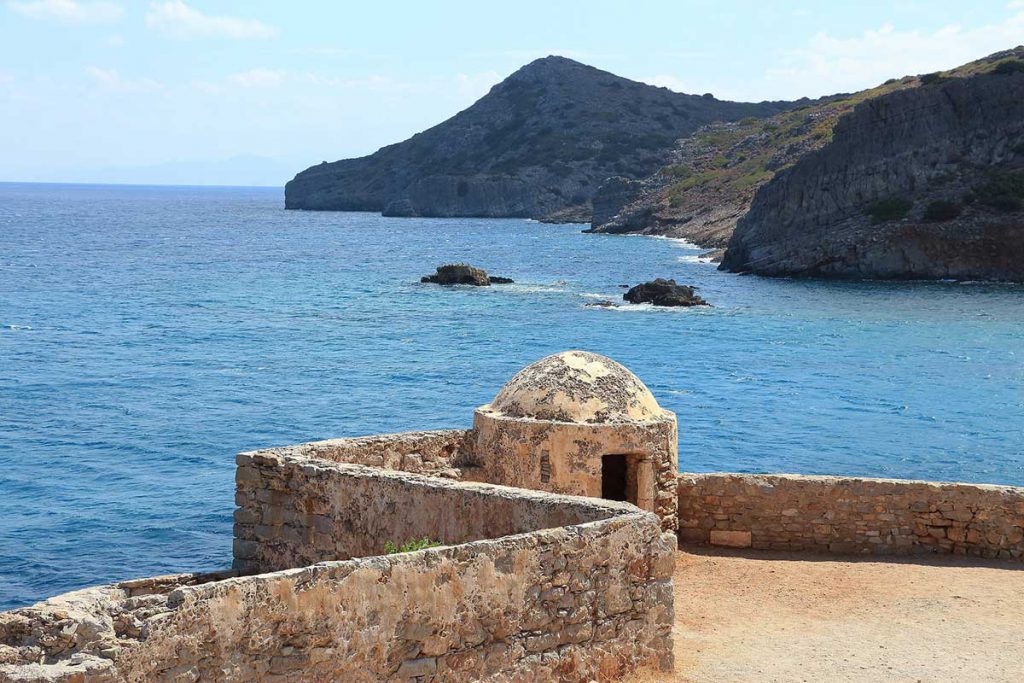
Spinalonga had a tumultuous history, starting with the 7th century when Arab raids depopulated the island. It remained uninhabited until the 16th century when the Venetians occupying Crete began extracting salt from seawater there.
Understanding the island’s commercial and strategic importance, the Venetians decided to fortify it and provide housing for salt pans workers and military personnel.
Venetian engineer Genese Bressani designed the island’s first fortifications and the blockhouses at the highest points of the island’s northern and southern sides in 1578. In its glory, Venetian Spinalonga had some 35 cannons around the island.
In 1579, Luca Michiel, Superintendent General of the Kingdom of Candia, as Crete was called during the Venetian rule, put the foundation stone of the fortifications. Two inscriptions – one on the main gate of the castle and the other on the rampart at the castle’s north side – attest to this historic event.
In 1584, the Venetians built more fortifications at the top of the hill to have a more extensive firing range, thus rendering Spinalonga an impregnable sea fortress, which, together with Gramvousa and Souda, was one of the critical seaward bastions in the Mediterranean basin.
The Venetians occupied the island even after Crete fell to the Ottomans during the Cretan War (1645–1669). They managed to maintain their hegemony over Spinalonga until the last Ottoman–Venetian War when they lost it.
But during the Cretan War, Cretan refugees and rebels sought shelter on Spinalonga – and the insurgents used the islet as a base to harass the Ottomans.
Spinalonga During the Ottoman Rule
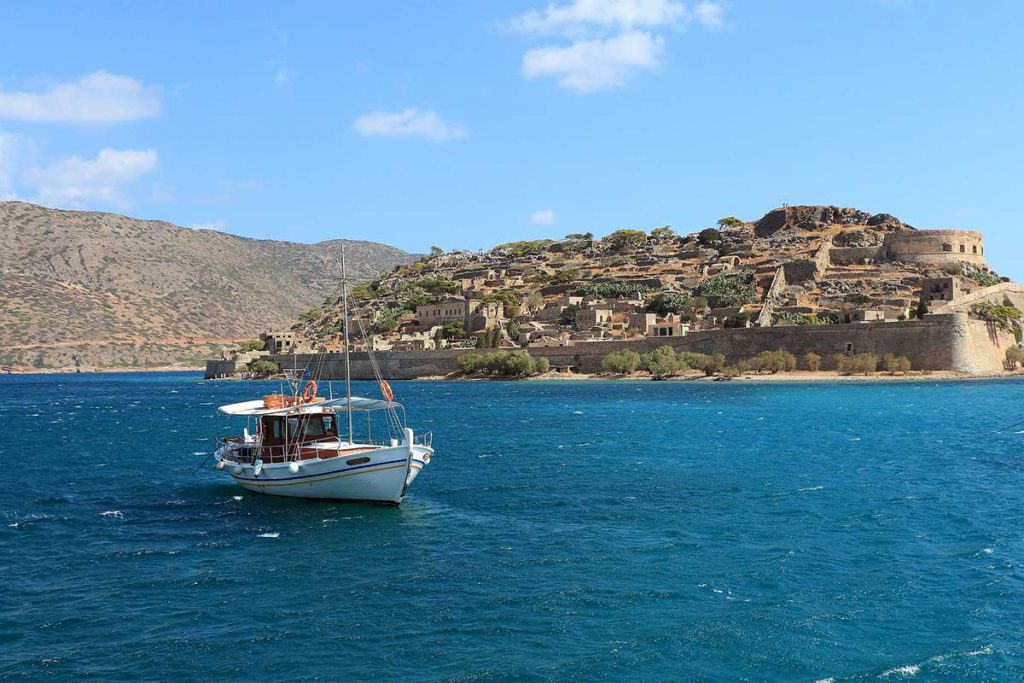
When the Turks finally defeated the Venetians, they took ownership of the island, taking captive its 600 inhabitants. The Muslims destroyed many Venetian houses, building new homes upon their foundations.
By 1881, Spinalonga became an important commercial center of Mirabello Bay. It had a population of over 1100, 200 homes, and 25 shops and workshops.
Today, most of Market Street from Ottoman rule is in ruin; however, a few restored shops with colorful window frames and doors house a permanent exhibition featuring items depicting the island’s history. You will see Venetian, Ottoman, and Greek Orthodox tombstones, photographs, pottery, syringes, morphine vials, etc.
After the Cretan revolt of 1866–1869, many Ottoman families fearing Cretan insurgents, sought refuge on the island. By 1881, they had their community. However, they had to flee Spinalonga in 1903 when the Cretans took it over from the Turks soon after the establishment of the independent Cretan State in 1898. Not a moment too soon since Crete became part of Greece in 1908.
Spinalonga, the Leper Colony
From 1903, when the last Turks left the island, to 1957, Spinalonga was a leprosarium (leper colony). UNESCO describes it as “a monument to human pain,” symbolizing the concept of incarceration and torment.
Until the 1930s, the conditions for the lepers deported to Spinalonga were inhumane. The officials seized their assets, revoking their citizenship rights. They received no medical treatment on the island.
Those suffering from leprosy (also known as Hansen’s disease or HD) were shunned and stigmatized by their families and friends, experiencing what the ancients called “death before death.”
A tunnel leading to the fortress’s heart was then known as Dante’s Gate, a nod to Dante Alighieri’s famous Inferno quote, “all hope abandon ye who enter here.”
In 1936, when leprosy survivor Epaminondas Remoundakis – who lost an arm and went blind because of the disease – founded the Brotherhood of the Sick of Spinalonga, the lepers living in the colony began experiencing a better quality of life on the island.
By then, they operated a small cafe, a bakery, a barber shop, and a school. They also received a small allowance from the government to buy groceries from the mainland. However, the prices were steep for leprosy sufferers, who eventually began cultivating plots on Spinalonga to grow fresh fruit and vegetables.
The Brotherhood of the Sick of Spinalonga also banned mirrors from the island to give the ailing a more positive life experience. No one wanted to see a reflection of themselves. Still, because they could see each other, many of the diseased sought refuge in the solitude of their homes.
However, some people tried to live normal lives; some even tried to have a family. More than 150 healthy babies were born and snatched from their mother’s bosoms to be brought to Athens and given for adoption.
Eventually, the leprosy patients paved the only road surrounding the island – you will walk on this trail as you visit Spinalonga.
Spinalonga Today
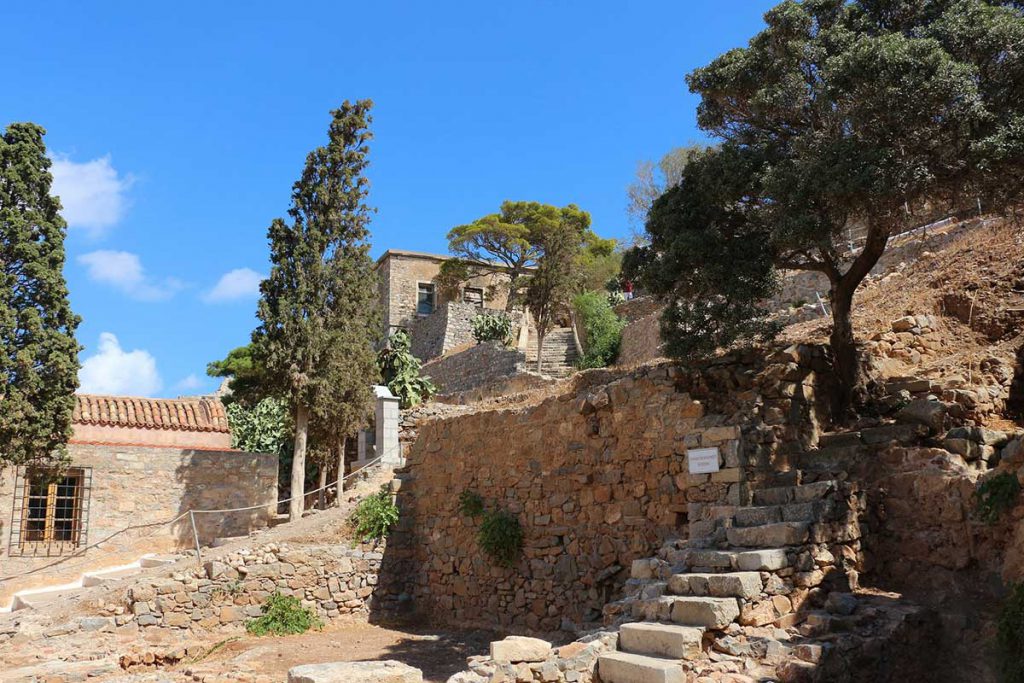
Today, the islet is a sought-after tourist attraction. Large parts of the original colony have been restored or preserved in excellent condition. You can stroll around and observe houses with pebbled courtyards and whitewashed walls, all attesting to the lifestyle of the people who lived here. Moreover, the site preserves architectural remains from different historical periods: Venetian, Ottoman, Muslim, and Cretan. Consider Spinalonga an outdoor museum.
Although Alice Augusta Ball discovered the treatment for leprosy in the 1940s, the Greek state kept the leprosarium open until 1957. Afterward, they made all efforts to erase any trace of its existence, destroying documents and materials used to treat the ill.
Maurice Born, co-author of Vies et morts d’un Crétois lépreux (Lives and deaths of a Cretan leper) explained in an interview with the BBC:
“The state, seeking to erase the stain on their reputation, wanted to destroy all evidence of the leper colony. But then, in the 1980s, they realized that the tourists were coming with the specific purpose of visiting the leper colony.”
Still, although tourists manifested interest in Spinalonga as early as the 1980s, it was Victoria Hislop’s 2005 novel The Island that spiked interest, and more than 300000 people visit it every year.
Spinalonga has been a protected archeological site since 1976, so come prepared with the admission fee: a total price of 8 € or a reduced 4 €.
Opening hours: 08:30-18:00 daily. It would be best if you considered these when booking your boat tour. Boats depart from Agios Nikolaos, Elounda, and Plaka every 30 minutes. You can find more about opening hours and pricing on the Greek Ministry of Culture and Sports website.
What to Know Before Visiting Spinalonga
- The admission price to visit the island is separate from the boat tour price.
- It is an archeological site with rugged terrain – only the main ring road is accessible for the physically challenged – so wear comfortable shoes. Wear sunscreen.
You are not allowed to enter the ruined buildings—only the cafe.




